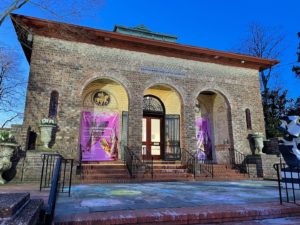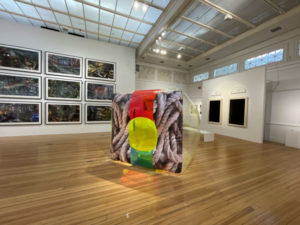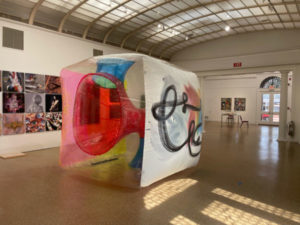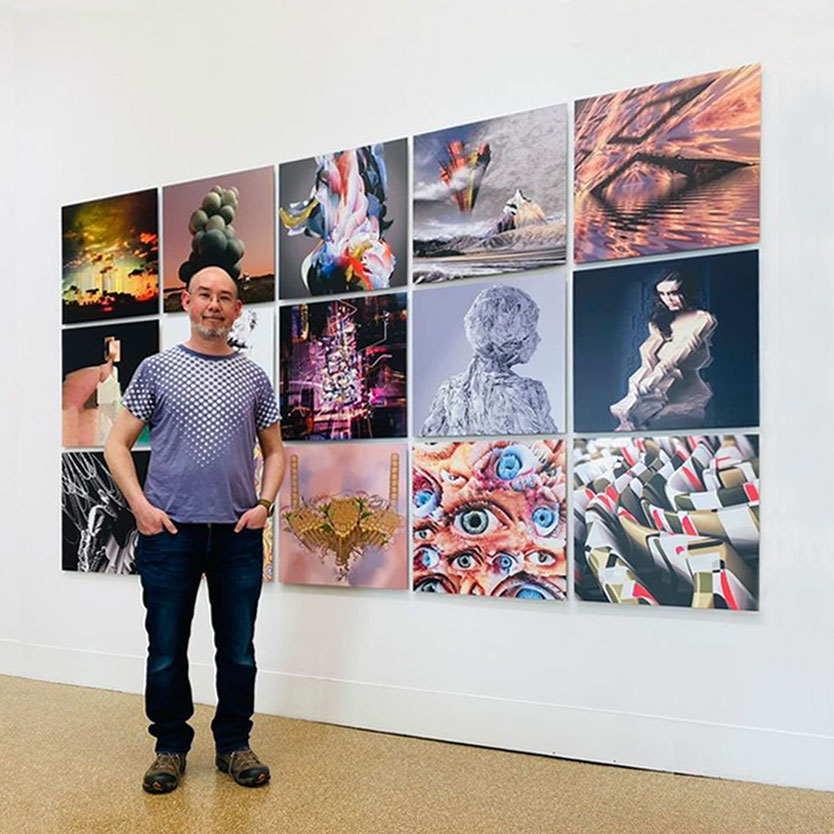Techspressionism: Digital & Beyond
 Colin Goldberg, FTC’s resident freelance artist and design consultant, served as curator of an exhibition of technology-based artwork entitled Techspressionism: Digital and Beyond, which ran from April 23 to July 23 at Southampton Arts Center. Goldberg is responsible for the design of the Five Towns College mascot, Fader, as well as design consultation and online development via his art and design studio Everbeta.
Colin Goldberg, FTC’s resident freelance artist and design consultant, served as curator of an exhibition of technology-based artwork entitled Techspressionism: Digital and Beyond, which ran from April 23 to July 23 at Southampton Arts Center. Goldberg is responsible for the design of the Five Towns College mascot, Fader, as well as design consultation and online development via his art and design studio Everbeta.
In the mid-1990’s Goldberg launched some of the earliest consumer-facing websites, launching brands such as Snapple and Popular Science on the web. In parallel to his commercial work, Goldberg is an accomplished fine artist, and a recipient of grants from the Pollock-Krasner Foundation and New York State Council on the arts. His NFTs and physical works are available for viewing online at Goldberg.art.
Techspressionism is defined by Urban Dictionary as “an artistic approach in which technology is utilized as a means to express emotional experience; a 21st century artistic and social movement.”
 Presenting innovative works in a broad range of styles, Southampton Arts Center’s new exhibition, TECHSPRESSIONISM – Digital & Beyond, will reflect the expressive potential of electronic media. The exhibition includes the works of more than 90 artists working with technology from more than 20 countries around the world, and includes work from the notable contemporary artist and musician DJ Spooky, among many others.
Presenting innovative works in a broad range of styles, Southampton Arts Center’s new exhibition, TECHSPRESSIONISM – Digital & Beyond, will reflect the expressive potential of electronic media. The exhibition includes the works of more than 90 artists working with technology from more than 20 countries around the world, and includes work from the notable contemporary artist and musician DJ Spooky, among many others.
![]()
“I believe that the computer, and technology in general, are not separate from humankind, but are a natural extension of us,” Goldberg explains. “Technology is a continuum which is as old as humanity, not a novelty or fad, and the computer is just one of a long string of tools which have enabled human expression, including the typewriter, the camera, the printing press, the pen, the pencil, and paint. Critic Helen Harrison’s suggestion to redefine techspressionism as an ‘approach’ rather than a ‘style’ has been critical in its development as a movement. This transformed techspressionism from a technological aesthetic into a philosophical methodology that artists around the world have been able to identify with.”
 Techspressionism’s senior advisor Helen Harrison, who also serves as the director of the Pollock-Krasner House and Study Center, shares: “The search for effective means of visualizing subjective, intangible content goes back to the early 20th century expressionists. Jackson Pollock and his generation took it to new levels of abstraction. The techspressionists in this exhibition are carrying it forward, using innovative tools and techniques to communicate their personal visions.” The exhibition includes the works of more than 90 artists working with technology from more than 20 countries around the world including Afghanistan, Australia, Belgium, Brazil, Canada, Canary Islands, Czech Republic, France, Germany, Hong Kong, India, Iran, Italy, Netherlands, Peru, Puerto Rico, Russia, Taiwan, Turkey, Uganda, Ukraine and the United States.
Techspressionism’s senior advisor Helen Harrison, who also serves as the director of the Pollock-Krasner House and Study Center, shares: “The search for effective means of visualizing subjective, intangible content goes back to the early 20th century expressionists. Jackson Pollock and his generation took it to new levels of abstraction. The techspressionists in this exhibition are carrying it forward, using innovative tools and techniques to communicate their personal visions.” The exhibition includes the works of more than 90 artists working with technology from more than 20 countries around the world including Afghanistan, Australia, Belgium, Brazil, Canada, Canary Islands, Czech Republic, France, Germany, Hong Kong, India, Iran, Italy, Netherlands, Peru, Puerto Rico, Russia, Taiwan, Turkey, Uganda, Ukraine and the United States.
Learn more about the show and Techspressionism at Techspressionism.com. A catalog is available as a softcover book and a free download here.
 Colin Goldberg with the “Global Grid”, comprised of artworks from 14 different countries, including Afghanistan, Brazil, Russia, India, France, the UK, Netherlands, Canary Islands, Germany, Iran, Puerto Rico, Czech Republic, Ukraine, and Italy. The images were sent as high-resolution files and fabricated in the USA as 24×24 prints on aluminum, signed digitally by the artists on labels on the back of each piece.
Colin Goldberg with the “Global Grid”, comprised of artworks from 14 different countries, including Afghanistan, Brazil, Russia, India, France, the UK, Netherlands, Canary Islands, Germany, Iran, Puerto Rico, Czech Republic, Ukraine, and Italy. The images were sent as high-resolution files and fabricated in the USA as 24×24 prints on aluminum, signed digitally by the artists on labels on the back of each piece.



